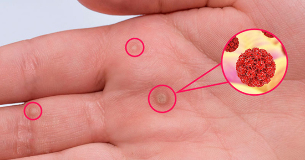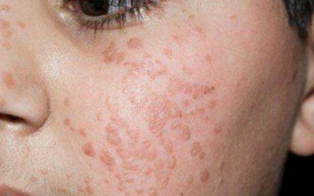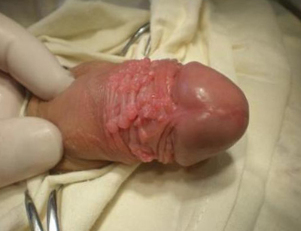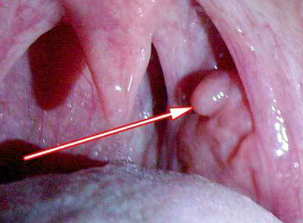
In this article, we're going to cover:
- What are papillomas?
- what is the reason for their formation.
- where they are more common in men and women;
- typical papillomas.
Papillomas are benign neoplasms that are located on the skin and mucous membranes. The reason for their formation is human papillomavirus (HPV), which is transmitted in various ways. The appearance of the formations depends on the type of virus that caused them.
Transmission paths
Human papillomavirus is transmitted by:
- During intercourse, including anal, oral genitalia.
- household. The microorganism can be present on personal items, toiletries, and infected towels. It easily penetrates through scratches and abrasions on the skin.
- During labor from mother to child.
Possibly auto-infection when the virus is transferred from one area of the body to another, which usually occurs during shaving and hair removal.
The incubation period (the time from the entry of HPV into the body to the appearance of signs of pathology) ranges from several weeks to several years.
Papillomas on the body are most common in disease, pregnancy, alcohol abuse, psycho-emotional stress and hypothermia, accompanied by a decrease in immune defense. The incidence of these formations in men and women is the same.

Human papillomavirus: types
Depending on the risk of oncological pathology of the skin, slimy papilloma viruses belong to the following groups:
- Low oncogenic risk (HPV 3, 6, 11, 13, 32, 34, 72, 73, 40–44, 51, 61 types).
- Medium oncogenic risk (HPV types 52, 56, 58, 30, 35, 45).
- High risk of developing malicious processes (HPV 50, 59, 16, 18, 64, 68, 70, 31, 33, 39 types).
Microorganisms with a low risk of cancer cause benign growths on the skin and mucous membranes.
types of papillomas
Simply

They are also known as vulgar and common. Such growths are more commonly caused by HPV types 26-29, 77, 63, 41.
Tingling, burning occurs anywhere on the body. Later, the growth of a spherical formation is noted, the surface of which gradually becomes rough. The tumor is flesh-colored at first and then darkens. The size of the papilloma on the body is 1 mm to cm
These neoplasms are simple, multiple. In the latter case, around the mother are the daughter's small papillomas that are formed first, usually the largest of them all.
Your localization is the back of the hand, the fingers, the spaces between them, the chin area, the edges of the lips. There are such papillomas on the neck. The child's knees are affected as children often crawl and become infected through small skin lesions.
Plantar
People with these formations are infected with HPV types 1, 2, 4. The growth resembles dry calluses, but has a number of characteristic differences.
The skin pattern is retained in calluses that are absent on the surface of papillomas, the latter are smooth. The formation caused by the papillomavirus is painful, unpleasant sensations are intensified when wearing pinch shoes. Black dots can be seen within the papilloma, which are absent in calluses.
Neoplasms sometimes self-destruct, which is more common in children. Sometimes small bubbles are visible around the neoplasm. The latter transform into new papillomas over time.

Flat papillomas
The growth of a rounded, elongated, oval shape rises 1–2 millimeters above the skin level. Flat papillomas are localized around the mouth, face and upper half of the body. Sometimes papillomas form on the neck.
There is papilloma data on the labia, the cervix in girls, the penis in men, in the rectum near the anus. These formations are in groups that merge with one another. Flat flesh-colored papillomas, sometimes slightly darker than the rest of the skin, are formed under the influence of 10, 49, 28 varieties of papillomavirus.
Threaded
When people notice that small papillomas have appeared on the neck, the growths are usually thread-like. The second name of the formations isacrochordus. The latter are caused by 2, 7 types of HPV.
In the initial stages, papillomas on the neck look like small yellowish seals, then the growths expand, become rough and take on an elongated, round, thread-like shape. A distinctive feature of a similar papilloma on the neck is a thin leg.
Most commonly, acrochordus is formed in men and women over 40 years of age. Growth also occurs on the skin of the upper eyelids, armpits, and mammary glands in the genital area.
pointed to

The formation data is calledwarts.are caused by the 6, 11, 44, 42, 54, 51, 55, 89 types of human papillomavirus in women and men.
Condylomas are small, single, multiple flesh-colored outgrowths that are located on the female, male genitals around the anus. There are papillomas in the vagina, labia minora, cervix. In men, condylomas are located on the foreskin, the head of the penis, in the urethra.
Sometimes separate elements merge with one another, creating a tumor-like formation that looks similar to the rooster comb cauliflower. The neoplasms are characterized by very rapid growth, a wide lesion can form in a few hours.
Pathology has a recurring course. It is more serious if there are simultaneous sexually transmitted infections of the genitourinary tract (e. g. chlamydia, gonorrhea, mycoplasmosis).
Condylomas that form on the cervix, especially in the cervical canal, are the most dangerous during pregnancy. Hormonal changes stimulate rapid growth, followed by tissue breakdown and secondary infections.
Papillomas in the mouth, larynx
Their occurrence is associated with the activity of papilloma viruses 6, 7, 11, 72, 73, 57, 32 types. Formations are rounded formations on a thin or wide base. The mucous membrane around them is pale pink with no visible pathological changes. The surface of the growths is pale pink, whitish.
Neoplasms are simple, multiple, and painless when pressed. They are located on the floor of the oral cavity, on the back of the tongue, on the hard, soft palate and on the lining of the larynx. The size ranges from 2 mm to 2 cm.

The overgrowth of the oral mucosa bleeds when biting and darkens as a result of the pouring out of blood. The state of health in the presence of such a disease does not deteriorate, the oral cavity opens freely.
If in an adult there are individual growths on the soft palate, tonsils, in the glottis, there is a feeling of the presence of a foreign body, a cough, the voice becomes hoarse. When the lesions become multiple, these symptoms worsen.
In children, pathological growths are often bilateral and their appearance is accompanied by the following symptoms:
- Difficulty inhaling, exhaling after exertion, then with complete rest.
- Cough after running, playing too much.
- Choking fits withstenosisof the larynx (pathological narrowing that prevents air from entering the lower airways).
The appearance of outwardly different papillomas is associated with infection with different types of HPV. To remove neoplasia, you need to consult a doctor. This should be done as soon as possible if papillomas are multiple, rapidly increasing in size, causing discomfort and constantly injuring.













































































